Uniram Baniramgyegok Valley (운일암 반일암 계곡)
17.7Km 2025-01-10
1926, Dongsangjucheon-ro, Jucheon-myeon, Jinan-gun, Jeonbuk-do
+82-63-430-8382
Uniram Baniramgyegok Valley (5 km long) falls between Myeongdeokbong Peak and Myeongdobong Peak in the northeastern region of Mount Unjangsan. The name Uniram refers to the steep walls of the valley where nothing but the sky, rocks, thick forests, and clouds can be seen. The valley is also befittingly named Baniram since it is so deep that it only receives direct sunlight for half the day. There are many strangely-shaped rocks like Jjokduri Rock, Cheollyeop Rock, and Daebul Rock scattered throughout the lush valley. At the peak of summer, the area is crowded with vacationers and is also popular for its autumn leaves.
Wanggung Dawon (왕궁다원)
18.1Km 2024-04-07
21-5 Sagok-gil, Wanggung-myeon, Iksan-si, Jeonbuk-do
Wanggung Dawon is a hanok café built in the 1800s. It was once the residence of Song Byungwoo, a rich person in the region, and has been operating as a traditional tea house since 2008, preserving the charm of the old hanok. The café offers a wide variety of teas, with the signature menu item being ssanghwatang (herbal tonic tea), a traditional Korean beverage. Ssanghwatang is made with ingredients such as jujube, ginseng, and chestnuts, known for its warming properties.
Jinan Red Ginseng Spa (진안홍삼스파)
18.7Km 2024-12-13
16-10, Oesayang-gil, Jinan-eup, Jinan-gun, Jeonbuk-do
+82-1588-7597
Developed with the concept of 'Nourishing Life' from Donguibogam (a traditional Korean medical encyclopedia), Jinan Red Ginseng Spa is the only red ginseng and medicinal herbal spa in Korea. Equipped with the largest health spa facility in Korea, Jinan Red Ginseng Spa consists of private spaces for various therapies; the yin-yang pool; and outdoor pools for families to enjoy comfortable moments together. The spa's programs combine red-ginseng-based herbal medicine with the principles of yin-yang and the five elements. This is in an effort to provide true health and relaxation for both the mind and body. In addition to the spa and therapy facilities, there are various convenient facilities such as a snack bar, a café, and a red-ginseng store.
Jinan Red Ginseng Festival (진안홍삼축제)
18.8Km 2025-07-18
160 Maisan-ro, Jinan-eup, Jinan-gun, Jeonbuk-do
+82-63-430-2393
Jinan-gun, known as Korea’s exclusive red ginseng special zone, is a plateau that lies at an average of more than 300m above sea level, producing high-quality red ginseng with a strong aroma and firm texture. The Jinan Red Ginseng Festival presents interesting programs based on the theme of red ginseng grown in the county, including the Fishing King, Plogging King, Healing King, and Treasure Hunt King. Additional activities include magic shows, bubble shows, balloon performances for children, and making red ginseng products such as red ginseng rice cake and red ginseng liquor.
◎ Ginseng vs. Red Ginseng
Ginseng is a well-known Korean traditional medicinal herb. When ginseng is steamed and dried nine times, it turns into red ginseng, which has a reddish color. This process enhances the preservation and increases the active components, making red ginseng beneficial for anti-aging, anti-inflammatory, and antioxidant effects. Its unique sweet-bitter flavor contributes to its popularity as a health food.
Maisan Provincial Park (마이산도립공원)
19.1Km 2024-04-07
126-3, Danyang-ri, Jinan-eup, Jinan-gun, Jeonbuk-do
+82-63-430-8751
Maisan Provincial Park is a rocky mountain composed of two great peaks, Ammaibong (687.4 meters) and Sumaibong (681.1 meters), and dozens of smaller peaks. These peaks have a variety of names depending on the season. In spring, the mountain provides sweeping panoramic views for its cherry blossoms, and cosmos and silver grass in fall. The Eunsusa Temple, Geumdangsa Temple, and Tapsa Temple with its 80 stone pagodas are all worth exploring, enhancing the experience of the area.
Tapsa Temple (마이산 탑사)
19.4Km 2025-01-08
367, Maisannam-ro, Maryeong-myeon, Jinan-gun, Jeonbuk-do
+82-63-433-0012
Tapsa Temple is famous for its over 80 stone pagodas. Each pagoda has a name, meaning and role. The pagodas are made of natural stone. They range in x_height from 1 meter to 13.5 meters and in shape from conical to straight. Two twin pagodas behind Daeungjeonhall are the tallest, standing three times the x_height of an average adult.
Maisan Hwaeomgul Cave (마이산 화엄굴)
19.5Km 2025-01-10
367, Maisannam-ro, Jinan-gun, Jeonbuk-do
+82-63-430-8751
Maisan Mountain has two major peaks made of sedimentary rocks; these peaks are said to be ‘couple peaks’ and cannot be found anywhere else. Sut Maibong (alt. 667 meters) is said to be the male peak while the slightly larger Am Maibong (alt. 673 meters) is deemed the female peak. In the early Joseon period the mountain was named ‘Sokgeumsan,’ but began to be called ‘Maisan’ after the 12th year of King Taejong, who commented that the two peaks resembled horse ears (‘maisan’ meaning ‘horse ears’). All along Maisan Mountain, visitors will find small crater-like rock cavities that are formed by prolonged weathering. These unique geological features, called ‘tafoni,’ are of great academic value.
Inside Hwaeomgul Cave, visitors can observe medicinal water that flows up from underground all throughout the year. It is widely believed that once you drink the water, especially on the days of the Spring and Autumn Equinox, you will soon have a son and be blessed by the mountain spirit. Even today, many women who have difficulty conceiving visit the mountain to pray to the mountain spirits for their heart’s desire—the gift of a child. The region in which Maisan is located is the birthplace of many talented people and national heroes, which some say is proof of the blessings of the mountain and its extremely powerful spirit.
Maisan Mountain Tafoni Terrain (마이산 타포니지형)
19.5Km 2024-04-07
255 Maisan-ro, Jinan-eup, Jinan-gun, Jeonbuk-do
Tafoni terrain refer to clusters of small caves resembling bombarded peaks. On the southern slope of Ammaibong Peak in Maisan Mountain, various-shaped honeycomb caves are widely spread out. These formations are believed to have been formed during the 4th Ice Age and subsequently shaped by frost action. Such caves are commonly found along coastlines.
Eunsusa Temple (은수사)
19.6Km 2024-04-07
406, Maisannam-ro, Jinan-gun, Jeonbuk-do
+82-63-433-2502
The temple located upon Maisan Mountain was called Sangwonsa Temple during the early Joseon dynasty and was later known as Jeongmyeongam Hermitage. According to the Korean Language Society, the temple began to be called Eunsusa (meaning ‘Silver Water Temple’) after King Taejo (the founder of the Joseon dynasty) visited the temple and remarked that the water flowing nearby was as clean and smooth as pure silver.
The temple is home to the largest known Beopgo (Buddhist drum used for rituals), which was produced in 1982. A stone sculpture and a statue of Granny Samsin (a goddess that looks after babies’ births and keeps them healthy) also stand at the temple. However, the temple’s most treasured assets are its two Natural Monuments: Emerald Gaiety (a climbing vine, Natural Monument No. 380) and the Cheongsil Pear Tree (Natural Monument No. 386). Reverse icicles, though found all over the mountainsides, are most readily and abundantly found in the Eunsusa Temple area.
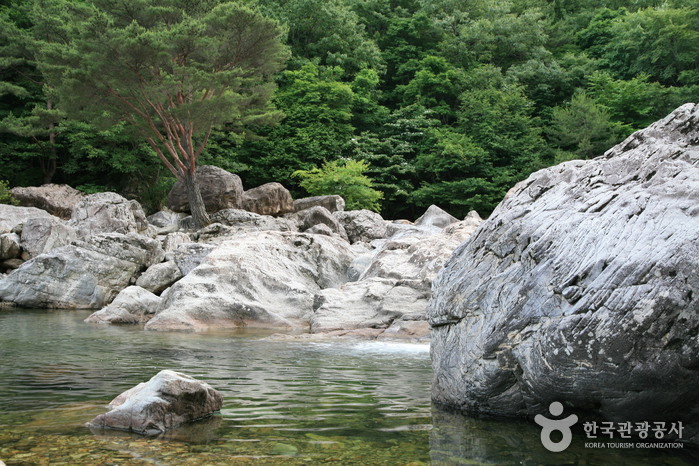
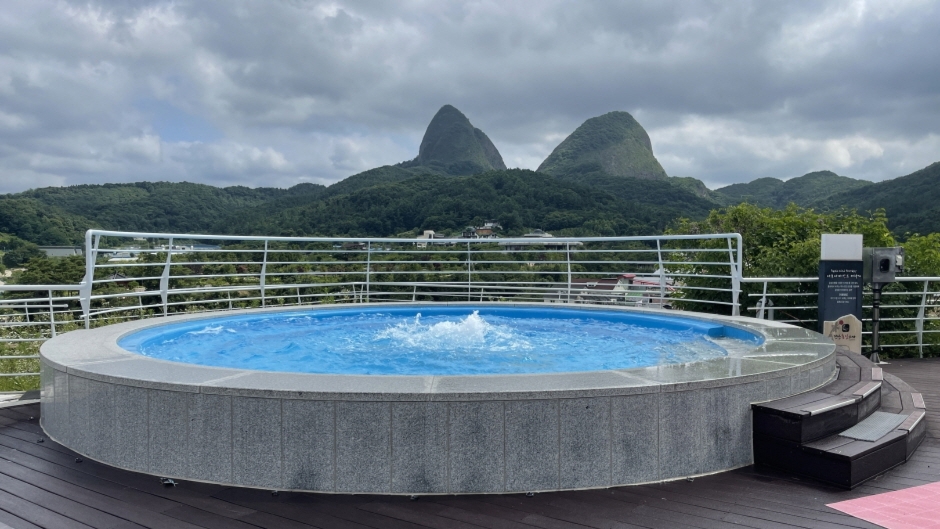
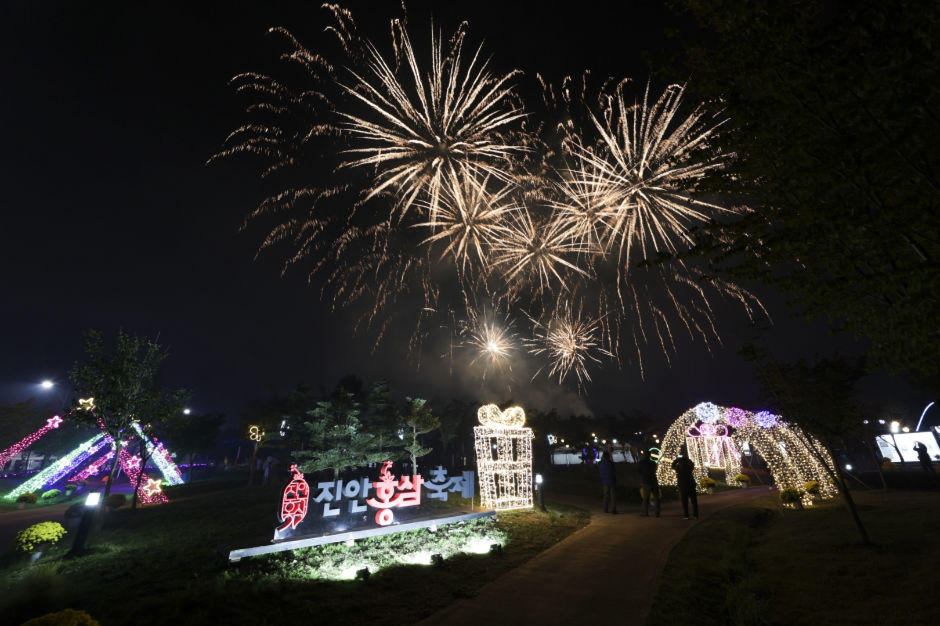

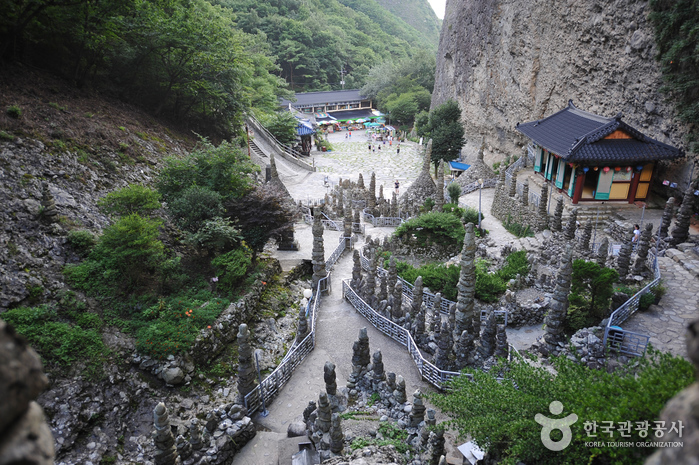
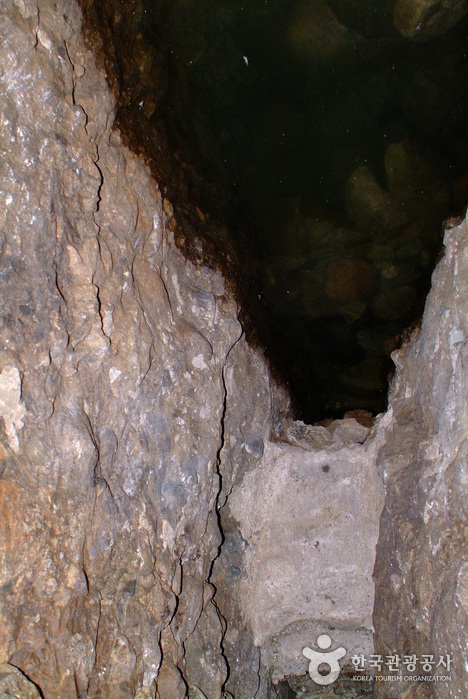
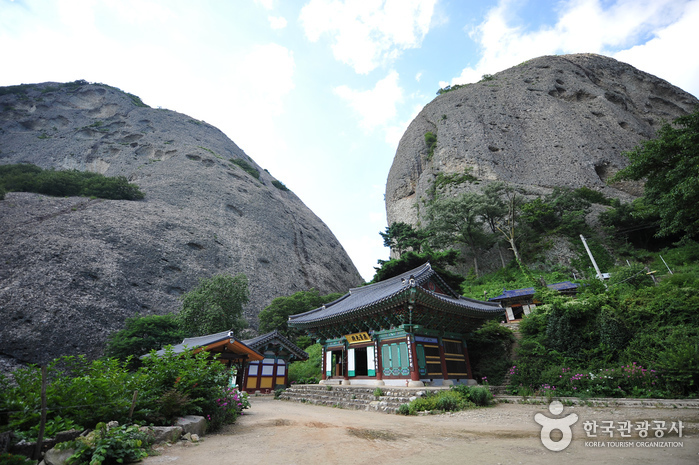
 English
English
 한국어
한국어 日本語
日本語 中文(简体)
中文(简体) Deutsch
Deutsch Français
Français Español
Español Русский
Русский